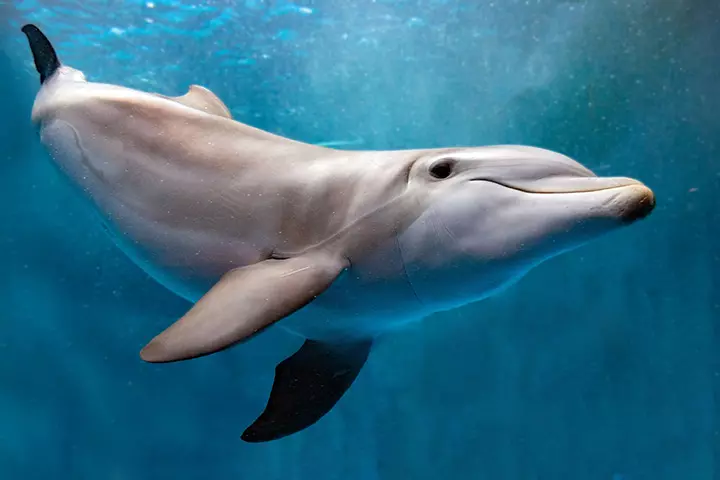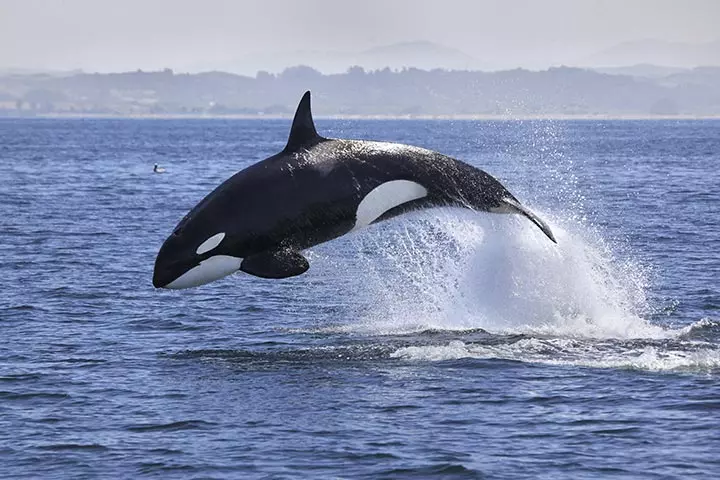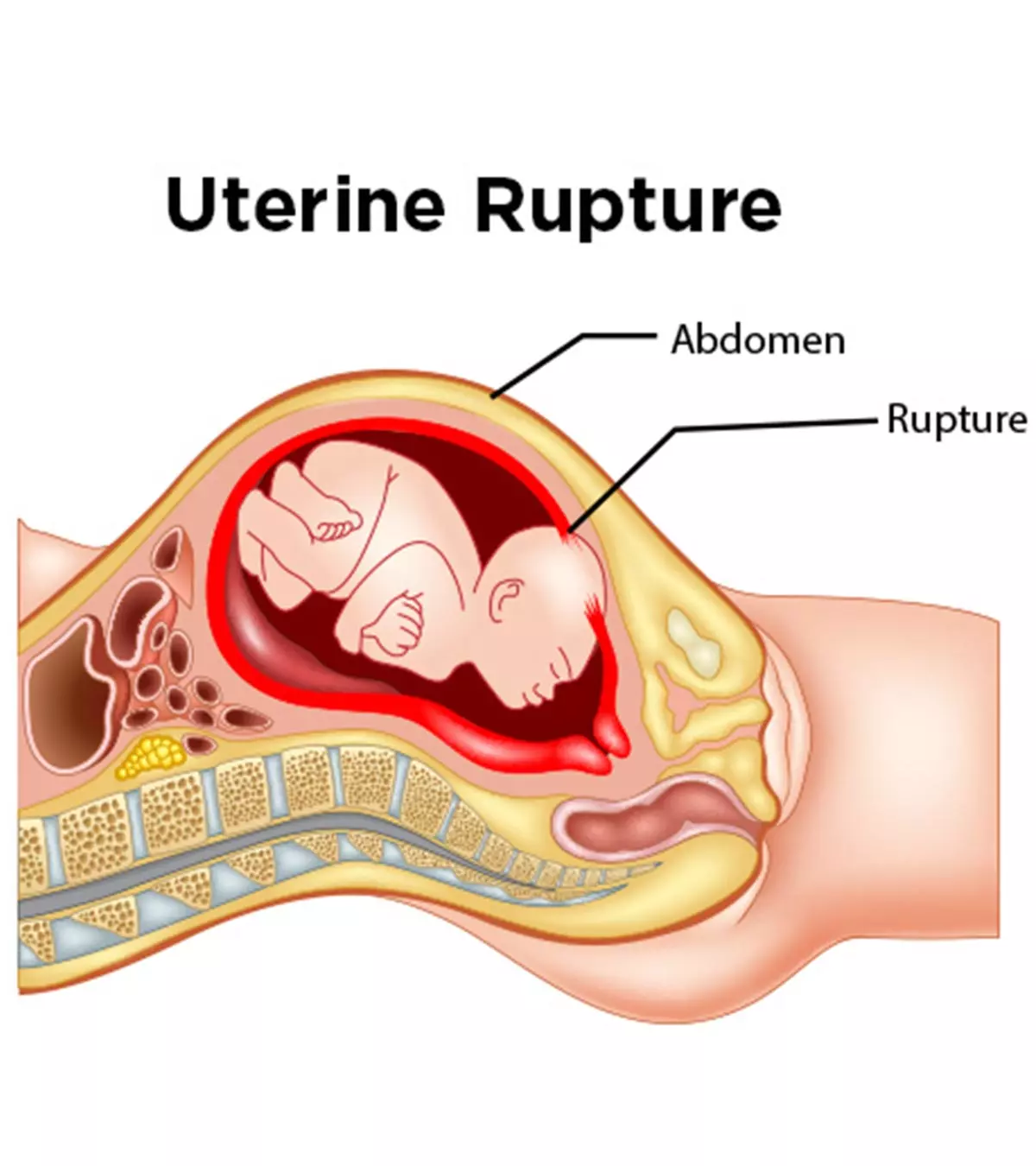

Image: Shutterstock

Dolphins are aquatic mammals known for their intelligence and smartness. Forty extant dolphin species exist across the world. If you are looking for facts about dolphins for kids, you are at the right place.
Dolphins have two sides of their brain, which they use to sleep, while the other stays awake. They also face severe threats of extinction due to human invasion. In this post, we bring you some fascinating facts about dolphins that will pique your kid’s interest.
Quick Facts About Dolphins
Scientific family:
Delphinidae
Size: Can range from 1.7 meters (5 ½ feet) to 8 meters (26 feet), across various species of dolphins
Weight: Ranges from 110 pounds (50 kilograms) to six tonnes (6000 kilograms)
Lifespan: Ranges from 20 to 60 years
IUCN conservation status: Most dolphin species are endangered or vulnerable
Name & Taxonomy
Image: Shutterstock
- Dolphins belong to a zoological family called Delphinidae, which has over 40 species of dolphins.
- The ancestors of dolphins were once land animals that later migrated to water.
- Dolphins are not fish. They are mammals and give birth to live young ones that breastfeed like the young ones of other mammals do.
Lifespan
Image: Shutterstock
- Since there are several species of dolphins, the lifespan varies. Bottlenose dolphins usually live for 20 years while striped dolphins can live up to 60 years.
Appearance
Image: Shutterstock
- Each species of dolphin has a unique appearance. For instance, some dolphins have a bottlenose while others have a dome-like nose. Dolphins are water animals with probably the most variety when it comes to appearance.
- The largest dolphin is the orca, which is also called the killer whale. An adult killer whale can measure anywhere between 5-8 meters (16-26 feet). It is also the heaviest of all dolphins, with the adult male orcas weighing about six tonnes (6000 kilograms) and the adult female orcas weighing about 3-4 tonnes (3000-4000 kilograms).
- Maui’s dolphin is the smallest dolphin and measures 1.7 meters (5 ½ feet). They usually weigh no more than 110 pounds (50 kilograms).
- All dolphins have at least 100 teeth, which they use only to grab the prey and not chew the food. Dolphins swallow their prey whole, almost like crocodiles.
- Since dolphins are mammals, they display some hair mostly around their blowhole. This hair could be the remnant of the fur of their ancestors.
- Dolphins have an organ called melon right about their upper jaw, near the forehead. The melon is made of fat cells and helps the dolphin focus its echolocation and find its prey easily.
Habits & Lifestyle
Image: Shutterstock
- The animal lives in water but has to come to the surface to breathe since it breathes by lungs and not gills. The blowhole on top of the dolphin’s head works as their nose.
- It is said that the dolphin’s brain stays half awake when they are asleep to prevent them from drowning. The tail flaps in a constant motion to keep the blowhole above the water surface.
- Dolphins spend their whole life in water and are among the few mammals on the planet that have essential life events such as birth, feeding, reproduction, and death, entirely within the water.
- Dolphins can recognize themselves in the mirror and can also tell apart reflection from the real world.
- Dolphins are social animals and often move in groups called pods.
- Dolphins are quite fast as swimmers. Different species of dolphins swim at different speeds, with some being able to reach speeds of up to 50 km/hr (31 miles/hour).
- Dolphins cannot swim backward. If they get stuck at a place, they will try turning around.
- Dolphins are probably most famous for leaping out of the water. The act is called porpoising. Dolphins do it to conserve energy while swimming vast distances since air offers less resistance against its body than water does.
- The deepest recorded dive by a dolphin is 300 meters (985 feet). Dolphins are known to dive even into the deepest parts of the oceans.
- Just like bats, dolphins use echolocation, also called bio-sonar, to locate their prey in water and navigate through the water.
- They emit high-frequency sounds from their nasal air sacs (sounds are not audible to human beings). The sound bounces from their prey or object and returns to the animal. The lower jaw and the melon organ within the forehead help pick the sound from where it reaches the ear. The frequency of the bounced noise helps the dolphin determine the size and location of its prey.
- Since dolphins have to pick very high-frequency sounds, they have very sensitive ears. The ear is also highly developed to pick sounds of higher frequency.
- The animal can also make vocalization. It may use vocalization along with echolocation for communication with dolphins in the pod.
- Some researchers have noticed dolphins displaying feelings such as empathy and concern for members of their own pod.
- Dolphins are considered capable of displaying a wide array of emotions just like dogs can, giving them the title, ‘second best friend of human beings.’
- Dolphins call out different members of their group with unique sounds (whistles of unique frequency). It has led to the speculation that each dolphin in a group has a name just as the other social animals like human beings.
- A very large group of dolphins is called a superpod and can include almost 1,000 dolphins.
Reproduction
Image: Shutterstock
- Most dolphins mate during the spring and the winter season.
- The gestation period (pregnancy) varies across the species and can be anywhere between nine and 17 months.
- During birth, it is quite common to see other dolphins in the group “assist” the mother dolphin if she has difficulty delivering the calf.
- A dolphin usually gives birth to only one calf at a time. It is rare to see the birth of twins. The calf will nurse for 11-24 months depending on the species.
- The calves are excellent swimmers right from birth. The mother rushes them to the surface immediately after birth to help them get their first breath.
- Dolphin calves stay with their mother until they are 3-8 years old.
- A dolphin calf nurses underwater. It has to learn to hold its breath for longer while nursing, swim while feeding, and watch for predators – all at once!
- Dolphins have umbilical cords during their fetal stage. It means they have belly buttons.
Diet
Image: Shutterstock
- Dolphins are carnivores. Fish is their primary food, although they may eat other small water creatures.
- A full-grown, adult dolphin can have about 33lbs (15 kg) of fish in a day.
- The high frequency of the dolphin’s echolocation may cause some small prey to die before the dolphin attacks. It makes the hunt easier.
- Seawater dolphins get all their fresh water from the fish they eat.
Habitat & Endangerment
Image: Shutterstock
- Dolphins are among the few water animals that can be found in all types of water habitats such as freshwater, seawater, and brackish water (mix of fresh and saltwater). They are found in the temperate regions closer to the Arctic and also in the tropics, closer to the equator.
- River water dolphins are endangered since they come in contact with human beings more often.
- Fishing nets often go undetected by the dolphin’s echolocation, which causes the animal to get trapped in them.
- Several dolphins species are declared endangered or vulnerable by the International Union for Conservation of Nature (IUCN).
- Baiji, also called Yangtze River dolphin, is a dolphin species that was driven to extinction by human activities at the Yangtze River in China.
- Dolphins are apex predators and do not face a threat from any other species other than humans.
- Dolphins in pods (groups) may kill a shark by repeatedly striking it with their noses. They may do so when they feel threatened by the shark or when there are several calves in the group that need protection.
Dolphins In Society & Culture
Image: Shutterstock
- Several civilizations revered the dolphin. In ancient Greece, it was a crime to kill a dolphin, and the accused could be punished by death.
- Dolphins are often used as entertainment animals at water theme parks. The animal’s astuteness is leveraged by humans to teach tricks and perform stunts, which is an abuse of the animals’ rights.
- Water theme park dolphins consistently display shorter lifespan and high mortality during the birth of their calves. It suggests that the animal is not ideal for domestication and it is better left to its natural environment.
- There have been several reports of dolphins saving the lives of shipwrecked fishers. Dolphins circle the person and protect them from sharks and other predators in the water, although it is not precisely known why dolphins display such behavior.
- Dolphins have proven themselves helpful in tactical defense just like dogs. In the past, the US Navy has used dolphins to carry out underwater missions.
Frequently Asked Questions
1. Do dolphins have three stomachs?
Dolphins have stomachs with three chambers – one easily expandable chamber to receive food, one for digestion, and the other to regulate the movement of digested food into the intestines (1).
2. Do dolphins have lips?
Dolphins have two phonic lips, which project into the nasal cavity. These lips can function independently and at the same time, producing clicking sounds and whistles simultaneously (2).
Dolphins are extremely smart and intelligent water creatures found worldwide. They use echolocation and make whistling sounds to communicate. Such interesting facts about dolphins for kids can greatly add to their knowledge. However, dolphins are apex predators who face the threat of extinction from human activities. Therefore, it is important to allow them to live in their natural environment instead of using them for entertainment in theme parks. Knowledge about these wonderful creatures will surely inspire children to think about their preservation and that of the ecosystem as a whole.
Infographic: Why Are Dolphins Important For The Ecosystem?
Dolphins play a crucial role in maintaining ecological balance. This infographic lists the importance of dolphins to the environment and shares about human activities that threaten their survival. Pin this infographic and share it with your child to sensitize them toward these beings.
Some thing wrong with infographic shortcode. please verify shortcode syntax
References
- Animal Health Q&A: Dolphin Care.
https://aqua.org/stories/2019-04-24-animal-health-q-a-dolphin-care - Communication & Echolocation.
https://seaworld.org/animals/all-about/bottlenose-dolphin/communication/
Community Experiences
Join the conversation and become a part of our nurturing community! Share your stories, experiences, and insights to connect with fellow parents.
Read full bio of Harshita Makvana





















